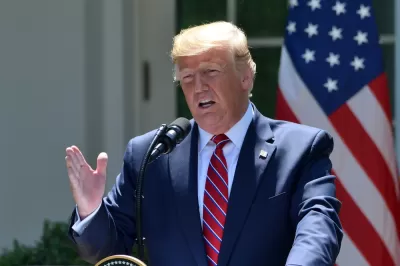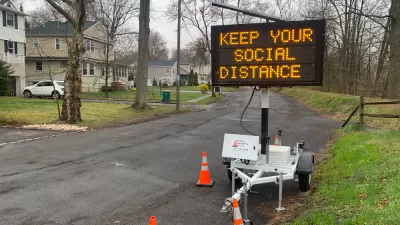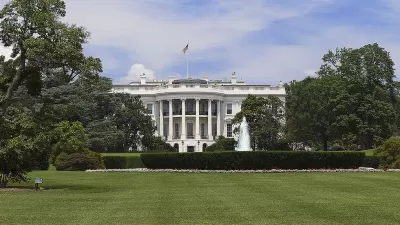President Trump signaled that he was considering lifting the public health guidelines at the end of the 15-day period on March 30 due to the severe economic impacts caused by containment strategies despite mounting deaths caused by the pandemic.

On Monday morning, U.S. Surgeon General Jerome Adams warned, "I want America to understand this week it's going to get bad." He was "speaking about the COVID-19 pandemic and efforts to stop the coronavirus from infecting more people in the U.S.," reported Bill Chappell for NPR.
Adams also urged people to stay home to prevent the respiratory virus from spreading — and he said too many people in New York and other states are ignoring guidance to observe social distancing and avoid close contacts with others.
However, his boss has been rethinking the merits of advising people to stay home to contain the infectious disease that has claimed 535 American lives as of March 23. What's at stake is the fate of "The President's Coronavirus Guidelines for America [pdf]", a 2-page advisory document issued March 16 entitled, "15 Days to Slow the Spread," recommending that people work and engage in school from home and "avoid social gatherings of more than 10 people." It does not mention social distancing, which is noted on the website, coronavirus.gov.
"President Trump on Sunday night said that the government would reassess the recommended period for keeping businesses shut and millions of workers at home after this week, amid millions of job losses caused by the efforts to contain the spread of the novel coronavirus," reported Maggie Haberman and
The various arguments, which are gaining traction across the political right, can be boiled down to this: No matter how many people may lose their lives to the coronavirus, many millions more stand to lose their jobs and face ruin if the economy does not reopen.
Lives or livelihood
In short, it would appear that this is a conflict between the two crises caused by COVID-19: public health and the economy, perhaps best illustrated by Illinois Gov. JB Pritzker's justification of the emergency "stay-at-home" disaster proclamation that shut down non-essential businesses on Saturday evening.
"I fully recognize I am choosing between saving people's lives and saving people's livelihoods," Pritzker said on Saturday, "but ultimately you can't have a livelihood if you don't have a life."
That view was not shared by the president's top economic advisor. “The President is right, the cure can’t be worse than the disease, and we’re going to have to make some difficult tradeoffs,” said Larry Kudlow on Monday on Fox News. “I spoke with the President about this very subject late last evening, so we’ll be looking at a number of different things. Let’s give it another week.”
Almost a month earlier, Kudlow, the Director of the National Economic Council, had famously claimed that the outbreak had been contained.
“We have contained this. I won’t say [it’s] airtight, but it’s pretty close to airtight,” said Kudlow. On Monday, as the coronavirus infection rate increases exponentially, Kudlow admitted an error in that assessment.
Related on Planetizen:
FULL STORY: Trump says he may soon push businesses to reopen, defying the advice of coronavirus experts

Maui's Vacation Rental Debate Turns Ugly
Verbal attacks, misinformation campaigns and fistfights plague a high-stakes debate to convert thousands of vacation rentals into long-term housing.

Planetizen Federal Action Tracker
A weekly monitor of how Trump’s orders and actions are impacting planners and planning in America.

In Urban Planning, AI Prompting Could be the New Design Thinking
Creativity has long been key to great urban design. What if we see AI as our new creative partner?

King County Supportive Housing Program Offers Hope for Unhoused Residents
The county is taking a ‘Housing First’ approach that prioritizes getting people into housing, then offering wraparound supportive services.

Researchers Use AI to Get Clearer Picture of US Housing
Analysts are using artificial intelligence to supercharge their research by allowing them to comb through data faster. Though these AI tools can be error prone, they save time and housing researchers are optimistic about the future.

Making Shared Micromobility More Inclusive
Cities and shared mobility system operators can do more to include people with disabilities in planning and operations, per a new report.
Urban Design for Planners 1: Software Tools
This six-course series explores essential urban design concepts using open source software and equips planners with the tools they need to participate fully in the urban design process.
Planning for Universal Design
Learn the tools for implementing Universal Design in planning regulations.
planning NEXT
Appalachian Highlands Housing Partners
Mpact (founded as Rail~Volution)
City of Camden Redevelopment Agency
City of Astoria
City of Portland
City of Laramie





























